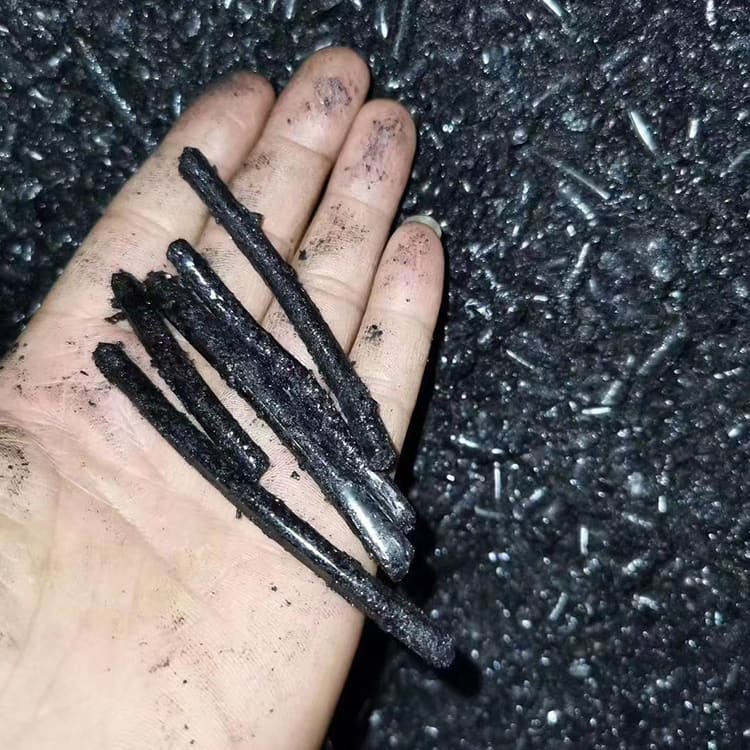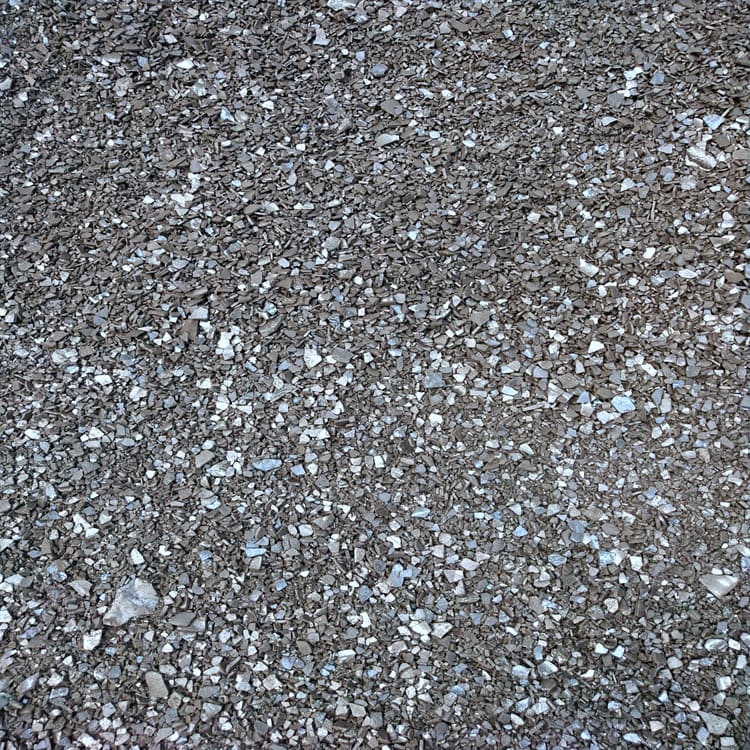Coal tar pitch has been a reliable material for roof construction for decades. Understanding its properties, especially regarding safety and coal tar pitch volatiles, is crucial for everyone involved, from manufacturers like us to the roofing professionals on site. This article dives deep into the world of coal tar pitch roofing, explaining how laboratory analysis, particularly following ASTM D450 standards, helps in its identification and ensures safe application. We’ll explore potential hazards, proper handling techniques, and why choosing high-quality coal tar pitch is paramount. If you're involved in the roofing industry or are considering coal tar pitch for your next project, this comprehensive guide is for you.
Understanding Coal Tar Pitch in Roofing: What Makes it a Reliable Choice?
What exactly is coal tar pitch, and why has it been a staple in the roofing industry for so long? Coal tar pitch is a dark, viscous material derived from the treatment of coal. It's known for its excellent waterproof qualities and durability, making it ideal for low-slope roof applications. Historically, coal tar pitch has been a key component in built-up roofing (BUR) systems, where layers of pitch and reinforcing ply are applied to create a robust and long-lasting roof membrane. Its unique property of softening when heated allows for a seamless and effective seal, contributing to its reputation for reliability. As a factory with seven production lines in China, we've seen firsthand the enduring demand for high-quality coal tar pitch for roof applications, especially in markets like the USA, North America, and Europe. This demand stems from its proven track record and long lifespan, often exceeding 50 years with proper maintenance.
What are Coal Tar Pitch Volatiles and Why is Understanding Them Crucial for Safety?
When coal tar pitch is heated, especially during installation, it releases pitch volatiles, also known as coal tar pitch volatiles (CTPVs). These ctpvs are essentially various chemical vapors that become airborne. Understanding the composition and potential hazards associated with these pitch volatiles is paramount for worker safety. These chemical vapors are composed of various chemical vapors, including polynuclear aromatic hydrocarbons (PAHs), which are aromatic hydrocarbons. Prolonged or excessive exposure to coal tar pitch volatiles can pose health risks. Therefore, implementing proper safety measures, such as adequate ventilation and personal protective equipment, is crucial in the roofing industry. As a supplier, we emphasize the importance of understanding these potential hazards to our customers like Mark Thompson in the USA, ensuring they prioritize safety on the job site.
How Does Occupational Exposure to Coal Tar Pitch and its Volatiles Affect Workers?
Occupational exposure to coal tar pitch and its pitch volatiles is a key concern for workers in the roofing industry. During activities like heating the hot pitch and applying it to the roof, or even during tear-off and demolition of old coal tar pitch roofs, workers can inhale or come into skin contact with these substances. Short-term exposure can cause skin and eye irritation, including burns from contact with hot pitch. Long-term exposure to coal tar pitch volatiles has been linked to more serious health issues, including certain types of cancer due to the carcinogenic nature of some of the chemical compounds present. This is why organizations like NIOSH provide recommendations and guidelines for safe handling. For someone like Mark Thompson, who values quality but also worker well-being, understanding and mitigating these risks is essential.
Implementing Stringent Safety Guidelines During Coal Tar Pitch Roofing Installation: What’s Essential?
Prioritizing safety during pitch roofing installation is non-negotiable. Several crucial guidelines must be followed to minimize worker exposure and prevent hazardous situations. Adequate ventilation is paramount to disperse chemical vapors that become airborne. Workers should always wear appropriate personal protective equipment (PPE), including respirators with appropriate filters, gloves, eye protection, and protective clothing to prevent skin contact with coal tar pitch. Avoiding burns from hot pitch is critical, requiring careful handling and the use of insulated tools. Regular breaks in well-ventilated areas can also help reduce cumulative exposure. Furthermore, proper training on the safe handling and application of coal tar pitch is essential for all roofing personnel. This includes understanding emergency procedures and how to respond to spills or accidents. As a responsible supplier, we always advocate for strict adherence to safety protocols on the job site.

The Role of Laboratory Analysis in Identifying Coal Tar Pitch Properties: Why is ASTM D450 Important?
Laboratory analysis plays a vital role in understanding the specific propertyies of coal tar pitch and ensuring its suitability for roofing applications. ASTM D450 is a standard specification for coal-tar pitch used in roofing, dampproofing, and waterproofing. This standard outlines various tests to determine key characteristics of the pitch, such as its softening point, flash point, and solubility. These tests help in the identification of the coal tar pitch grade and ensure it meets the required specifications for its intended use. For instance, the softening point test indicates the temperature at which the pitch transitions from a solid to a more pliable state, crucial for proper application. The laboratory data provides objective measures of quality and consistency, ensuring that the roofing materials used meet industry standards. Our laboratory at the factory meticulously tests our coal tar pitch to ensure it meets and exceeds ASTM D450 standards, guaranteeing high-quality products for our customers. You can also explore our range of high temperature asphalt, another critical product for various industrial applications.
Understanding NIOSH Recommendations for Safe Handling of Coal Tar Pitch: What are the Key Takeaways?
NIOSH, the National Institute for Occupational Safety and Health, provides crucial recommendations for minimizing occupational exposure to coal tar pitch and its pitch volatiles. These recommendations emphasize a hierarchy of controls, starting with eliminating or substituting hazardous materials where possible. When elimination isn't feasible, engineering controls like local exhaust ventilation to capture chemical vapors at the source are recommended. NIOSH also stresses the importance of administrative controls, such as modifying work practices to reduce exposure duration and intensity. Finally, personal protective equipment (PPE), including respirators, gloves, and protective clothing, serves as the last line of defense. NIOSH also provides guidance on sample collection and analysis for monitoring workplace air quality to ensure compliance with exposure limits. Following NIOSH guidelines is paramount for creating a safer workplace for roofing professionals.
How Should Samples Be Collected and Assessed for Coal Tar Pitch Roofing Safety?
Proper sample collection and assessment are crucial for monitoring workplace exposure to coal tar pitch volatiles and ensuring safety. Air samples should be collected in the breathing zone of workers during typical roofing activities to accurately measure their exposure levels. These samples are then sent to a laboratory for analysis to determine the concentration of coal tar pitch volatiles present. Various analytical methods can be used, and the results are compared against established exposure limits. Additionally, samples of the coal tar pitch itself can be analyzed to determine its composition and properties, verifying that it meets the required specifications, such as ASTM D450. Regular assessment through sample analysis allows for proactive identification of potential hazards and the implementation of appropriate control measures. This data-driven approach is essential for maintaining a safe working environment.
What are the Established Occupational Exposure Limits for Coal Tar Pitch and its Volatiles?
Establishing and adhering to occupational exposure limits is critical for protecting worker health when dealing with coal tar pitch. Organizations like OSHA in the United States set permissible exposure limits (PELs) for various chemical substances, including coal tar pitch volatiles. These limits represent the maximum concentration of a substance that most workers can be exposed to without experiencing adverse health effects over a specified period, typically an 8-hour time-weighted average. It's important to note that these are regulatory limits, and organizations like NIOSH may recommend even lower limits to provide an additional margin of safety. Compliance with these exposure limits requires careful monitoring of workplace air quality and the implementation of controls to minimize worker exposure. Understanding these limits is fundamental for ensuring a safe and healthy working environment in the roofing industry.
Modifying Work Practices to Minimize Exposure to Coal Tar Pitch Volatiles: Practical Steps
Minimizing exposure to coal tar pitch volatiles requires a proactive approach to modifying work practices. One key strategy is to reduce the heating temperature of the pitch whenever possible, as lower temperatures generally lead to lower emissions of pitch volatiles. Implementing work schedules that limit the duration of worker exposure to hot pitch can also be effective. Ensuring proper ventilation, both general and local exhaust, is crucial for removing chemical vapors from the workplace. When feasible, using mechanical equipment for tasks that could increase exposure, such as stirring or applying the pitch, can reduce direct worker involvement. Proper training on safe work practices, including techniques to minimize the generation of pitch dust during tear-off, is also essential. Furthermore, regular monitoring of workplace air quality allows for the assessment of current practices and the identification of areas for improvement. By implementing these practical steps, the risk of occupational exposure can be significantly reduced.

The Importance of Proper Identification in Ensuring Coal Tar Pitch Roof Safety
Proper identification of coal tar pitch is fundamental to ensuring roof safety. Knowing the specific type and grade of pitch being used is crucial for understanding its properties, potential hazards, and appropriate handling procedures. For example, high-temperature coal tar has different characteristics and requires different safety precautions compared to medium or low-temperature asphalt. ASTM D450 provides a standardized method for identification and classification. Misidentification could lead to the use of incorrect application techniques, potentially compromising the integrity of the roof and increasing worker exposure to hazardous substances. Clear labeling of materials and proper documentation are essential components of a robust safety program. Furthermore, laboratory testing can provide definitive identification, ensuring that the materials used meet the required specifications and safety standards. This meticulous approach to identification is a cornerstone of responsible roofing practices. Our high-quality Coal tar pitch flakes are manufactured with strict adherence to these identification protocols.
In conclusion, remember these key points about coal tar pitch roof safety:
- Coal tar pitch is a durable and waterproof roofing material, but it releases pitch volatiles when heated.
- Understanding the potential hazards of coal tar pitch volatiles is crucial for worker safety.
- Occupational exposure can be minimized through strict adherence to safety guidelines and the use of PPE.
- ASTM D450 provides standards for the identification and testing of coal tar pitch.
- NIOSH offers valuable recommendations for safe handling and exposure control.
- Regular air sample collection and laboratory analysis help monitor workplace exposure.
- Adhering to established occupational exposure limits is essential for protecting worker health.
- Modifying work practices can significantly reduce exposure to pitch volatiles.
- Proper identification of the coal tar pitch grade is vital for safe application.
- Prioritizing safety ensures the well-being of workers and the longevity of the roof.
By understanding these aspects of coal tar pitch roofing, and implementing robust safety measures, we can continue to utilize this reliable material effectively and responsibly. For more information on our high-quality coal tar pitch products, please visit our website. We are a leading High Quality Coal Tar Pitch Factory and Supplier , dedicated to providing safe and effective solutions for your roofing needs. Explore our range of Medium temperature asphalt block and Special asphalt for oilfield additives as well for diverse industrial applications.
Post time: 12-31-2024





